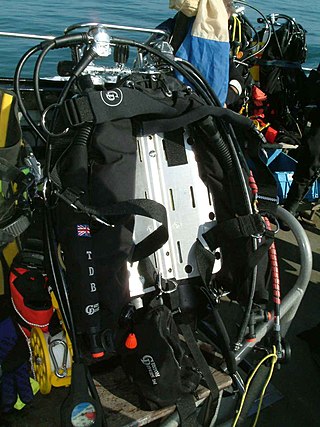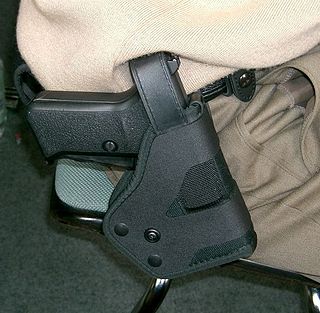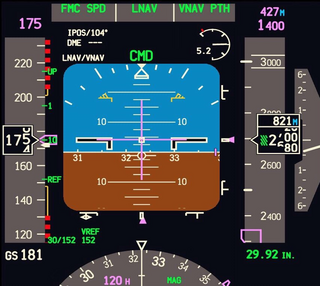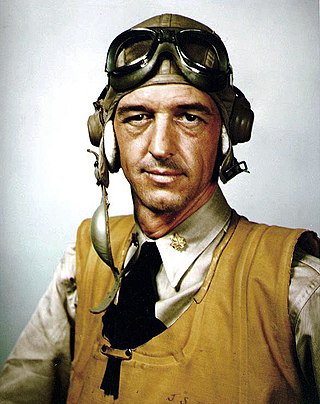
A fixed-wing aircraft is a heavier-than-air aircraft, such as an airplane, which is capable of flight using aerodynamic lift. Fixed-wing aircraft are distinct from rotary-wing aircraft, and ornithopters. The wings of a fixed-wing aircraft are not necessarily rigid; kites, hang gliders, variable-sweep wing aircraft, and airplanes that use wing morphing are all classified as fixed wing.

A cockpit or flight deck is the area, on the front part of an aircraft, spacecraft, or submersible, from which a pilot controls the vehicle.

Stockings are close-fitting, variously elastic garments covering the leg from the foot up to the knee or possibly part or all of the thigh. Stockings vary in color, design, and transparency. Today, stockings are primarily worn for fashion and aesthetics, usually in association with mid-length or short skirts.

The pedal is the part of a bicycle that the rider pushes with their foot to propel the vehicle. It provides the connection between the cyclist's foot or shoe and the crank allowing the leg to turn the bottom bracket spindle and propel the bicycle's wheels. A pedal usually consists of a spindle that threads into the end of the crank, and a body on which the foot rest is attached, that is free to rotate on bearings with respect to the spindle.
A motor glider is a fixed-wing aircraft that can be flown with or without engine power. The FAI Gliding Commission Sporting Code definition is: a fixed-wing aerodyne equipped with a means of propulsion (MoP), capable of sustained soaring flight without thrust from the means of propulsion.

Motorcycle boots are associated with motorcycle riders and range from above ankle to below knee boots. They have an outside of a typical boot but a low heel to control the motorcycle. To improve motorcycle safety, motorcycle boots are generally made from a thick, heavy leather and may include energy absorbing and load spreading padding, metal, plastic and/or composite materials to protect the motorcycle rider's feet, ankles and legs in an accident. For use in wet weather, some boots have a waterproof membrane lining such as Gore-Tex or SympaTex.

A paper plane is a toy aircraft, usually a glider, made out of single folded sheet of paper or paperboard. It typically takes the form of a simple nose-heavy triangle thrown like a dart.

A backplate and wing is a type of scuba harness with an attached buoyancy compensation device (BCD) which can be used to establish neutral buoyancy underwater and positive buoyancy at the surface. Unlike most other BCDs, the backplate and wing is a modular system, in that it consists of separable components. The core components of this system are:

A handgun holster is a device used to hold or restrict the undesired movement of a handgun, most commonly in a location where it can be easily withdrawn for immediate use. Holsters are often attached to a belt or waistband, but they may be attached to other locations of the body. Holsters vary in the degree to which they secure or protect the firearm. Some holsters for law enforcement officers have a strap over the top of the holster to make the handgun less likely to fall out of the holster or harder for another person to grab the gun. Some holsters have a flap over the top to protect the gun from the elements.

A flight suit is a full-body garment, worn while flying aircraft such as military airplanes, gliders and helicopters. These suits are generally made to keep the wearer warm, as well as being practical, and durable. Its appearance is usually similar to a jumpsuit. A military flight suit may also show rank insignia. It is sometimes used by Special Forces as a combat uniform in close quarters battle or visit, board, search, and seizure situations, for its practicality.

The Garmin G1000 is an electronic flight instrument system (EFIS) typically composed of two display units, one serving as a primary flight display, and one as a multi-function display. Manufactured by Garmin Aviation, it serves as a replacement for most conventional flight instruments and avionics. Introduced in June 2004, the system has since become one of the most popular integrated glass cockpit solutions for general aviation and business aircraft.

A primary flight display or PFD is a modern aircraft instrument dedicated to flight information. Much like multi-function displays, primary flight displays are built around a Liquid-crystal display or CRT display device. Representations of older six pack or "steam gauge" instruments are combined on one compact display, simplifying pilot workflow and streamlining cockpit layouts.

Cycling shoes are shoes purpose-built for cycling. There are a variety of designs depending on the type and intensity of the cycling for which they are intended. Key features include rigidity, for more-efficient transfer of power from the cyclist to the pedals, weight, a method of attaching the shoe firmly to the pedal and adaptability for use on and off the bicycle. Most high-performance cycling shoes can be adjusted while in use, via a quick-adjusting system that has largely replaced laces.
A traction splint most commonly refers to a splinting device that uses straps attaching over the pelvis or hip as an anchor, a metal rod(s) to mimic normal bone stability and limb length, and a mechanical device to apply traction to the limb.

The Flying Flea is a large family of light homebuilt aircraft first flown in 1933.

A lavalier microphone or lavalier is a small microphone used for television, theater, and public speaking applications to allow hands-free operation. They are most commonly provided with small clips for attaching to collars, ties, or other clothing. The cord may be hidden by clothes and either run to a radio frequency transmitter kept in a pocket or clipped to a belt, or routed directly to the mixer or a recording device.

The Volkswagen Westfalia Camper was a conversion of the Volkswagen Type 2, and then, the Volkswagen Type 2 (T3), sold from the early 1950s to 2003. Volkswagen subcontracted the modifications to the company Westfalia-Werke in Rheda-Wiedenbrück.

AN-6530 Goggles were produced during World War II as eye protection for United States Army and Navy flight crews. In 1943, the AN-6530 design replaced as standard the nearly identical USAAF B-7 goggle produced by Chas Fischer Spring Company of Brooklyn, New York. Contracts for AN-6530 goggles were awarded to Chas Fischer Spring Co. and American Optical.

A flight helmet, sometimes referred to as a "skull dome", "bone dome" or "foam dome", is a special type of helmet primarily worn by military aircrew.
Cockpit iPads are iPads used in the aviation industry as part of an electronic flight bag to replace paper charts and manuals. This technology is currently being used by both private and commercial aircraft pilots.

















